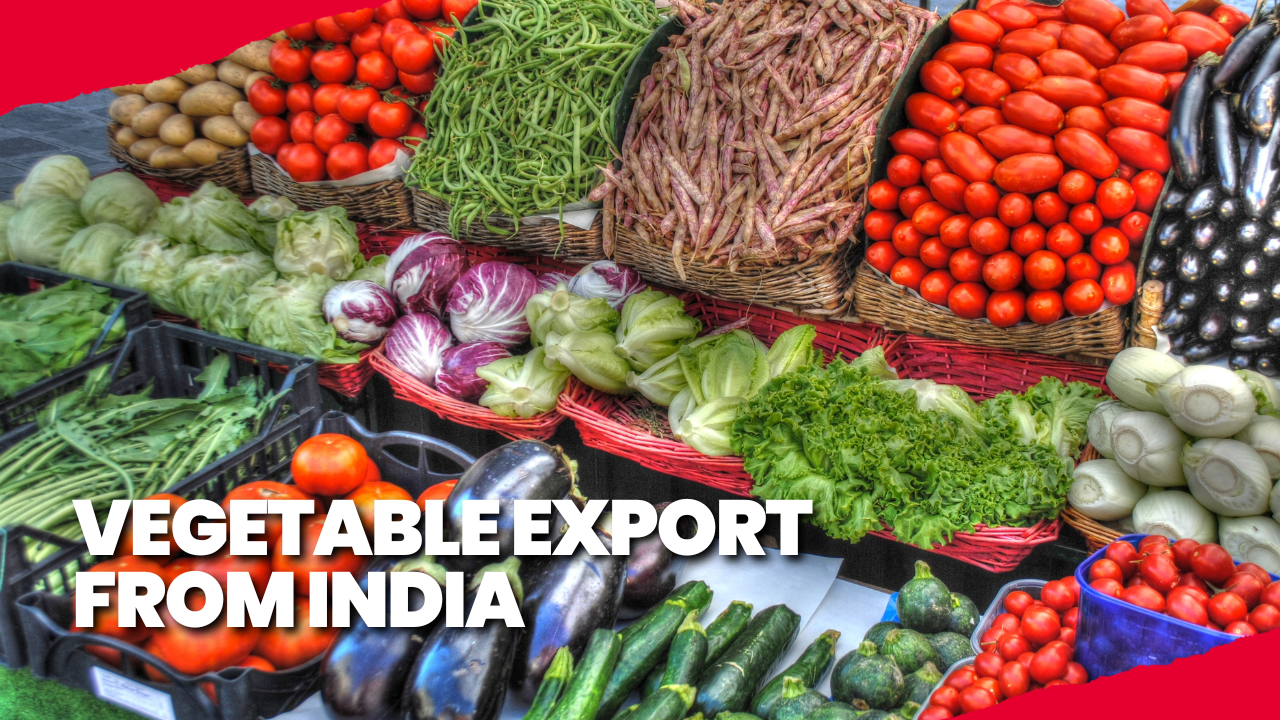
India is a large country with different agro-climatic conditions that make it ideal for growing a wide variety of vegetables. India stands second only to China in terms of global output, accounting for roughly 13%. It produces approximately 70 million tons of vegetables each year. Here is How to Start a Successful Vegetable Export Venture from India
Because of the increased demand for frozen veggies, pickles, mushrooms, and other similar products in recent years, there has been a significant business opportunity in exports, and having an Import Export Code is quite helpful. Because of its favorable climate and geological location, it has a wide range of export opportunities around the world.
Registration required to Export Vegetables from India
How to export vegetables from India?, many registrations and permissions must be obtained to ensure compliance with national and international trade restrictions. Here’s a list of the primary registrations and permits you need:
Company registration
Create a legal entity for your business (e.g., proprietorship, partnership, LLP, private limited company).
Permanent Account Numbers (PAN)
Get a PAN from the Income Tax Department for your company entity.
Import Export Codes (IEC)
Mandatory for any import/export business; get from the Directorate General of Foreign Trade (DGFT).
GST Registration
All firms in India must comply with tax regulations.
APEDA Registration
Register with the Agricultural and Processed Food Products Export Development Authority (APEDA) to export agricultural products, such as vegetables. This provides access to a variety of benefits, subsidies, and market data.
Phytosanitary Certificate
The Plant Quarantine department issues this certificate to confirm that your shipment meets the importing country’s plant health criteria.
FSSAI License
If you plan to prepare or package vegetables, seek a license from the Food Safety and Standards Authority of India (FSSAI).
Membership of Export Promotion Councils
Joining relevant export promotion councils might provide further help and direction.
Compliance with Importing Country Regulations
Ensure conformity with the importing country’s legislation and standards, which may require additional certifications or quality tests.
Top Vegetable Exporters & Their Destinations
According to data from the Indian Ministry of Commerce and Industry, India’s top vegetable exporters for the financial year 2022-23 were as follows:
Kerala:
Kerala exports 8.3 million metric tons of vegetables worth $375 million, specializing in ginger, turmeric, and tapioca.
Tamil Nadu:
Tamil Nadu exports 6.7 million metric tons worth $275 million, primarily tomatoes, onions, and potatoes.
Gujarat:
Gujarat’s specialty is chillies, eggplants, and cucumbers, with exports worth $250 million totaling 5.5 million metric tons.
Andhra Pradesh:
Andhra Pradesh exports 4.5 million metric tons valued at $225 million, primarily brinjals, cabbages, and cauliflowers.
Maharashtra:
Maharashtra’s exports of peas, beans, and capsicums are 3.5 million metric tons worth $200 million.
Other significant contributors to India’s vegetable export business include Karnataka, West Bengal, Punjab, and Haryana. The principal destinations for these exports are the UAE, Saudi Arabia, the US, the UK, and the Netherlands.
Also Read This: Top Import Export Business Ideas for Indian Entrepreneurs
How to Find Buyers for the Products?
Now that you’ve completed your export business and supply chain setup, it’s time to start looking for buyers, and there are a few traditional methods you can use. Finding buyers is critical to a successful export business. So, let’s look at many strategies for finding consumers and connecting with potential clients.
- Register on B2B websites
- Visit Trade Shows
- Find recommendations
- Promote on social media
- Cold Emails and Outreach
- Close the deal with the buyer
Expert Advice for A Successful Vegetable Export From India Business
Here are some tips for successful organic vegetables export from India.
Start Small, Scale Gradually
Begin with a focused approach, then broaden as you gain expertise and market knowledge.
Build Relationships
Maintain excellent ties with both customers and suppliers to ensure a smooth transaction.
Quality and competitive pricing
To attract and maintain customers, offer high-quality products and services at competitive pricing.
Stay updated
Stay current with the newest trends and market developments to stay ahead of the competition.
Wrapping It Up
Starting a vegetable export business from India requires meticulous planning, attention to rules, and effective marketing. By following the methods indicated above, you can begin a thriving export business that meets the global need for high-quality Indian vegetables.
With devotion and the appropriate attitude, your company could succeed in the worldwide market.
FAQs
Many vegetables are exported from India, including onions, broccoli, brinjal, spinach, cabbage, green chilies, and so on.
You will also need to obtain your Import Export Code (IEC) and Agricultural and Processed Food Products Export Development Authority (APEDA) License. The APEDA license costs Rs 5000 minus GST and the Import Export Code costs between Rs 500 and Rs 1000.
The United Arab Emirates, Bangladesh, the United Kingdom, Nepal, Saudi Arabia, Qatar, Oman, Kuwait, Malaysia, Indonesia, Sri Lanka, and the Netherlands are some of the nations to which Indian fruits and vegetables are exported.
Also Checkout Our YouTube Chanel: @limeinstituteofexportimport






